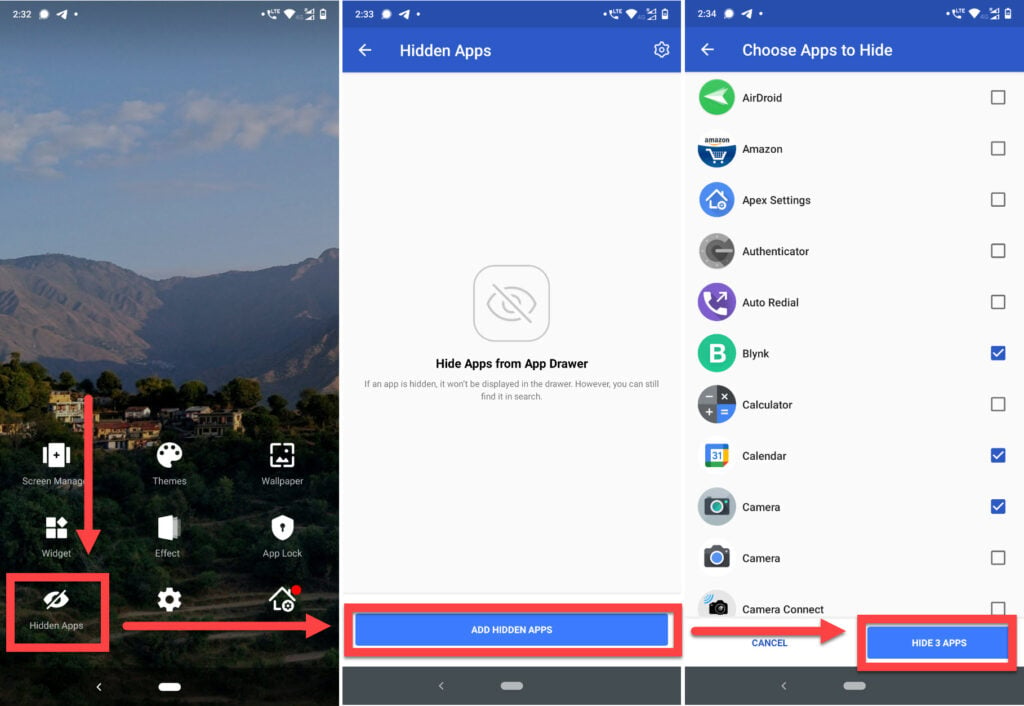Android smartphones have come a long way since their humble (and laggy) beginnings in 2008. Not only does Android enjoy the majority of the global smartphone market share at a whopping 71.18%, but they’re also pretty capable phones altogether.
A large part of this success comes from its extensive app library. With just how easy it is to make an app for Android, there’s an app for everything, and in most cases, there are hundreds of apps for anything that you’re looking to do.
Android phones also have revamped security features these days that let users protect their phones, data, and even their apps from prying eyes. In this article, we’re going to take a look at five ways you can hide your apps in your Android phone.
Also read: Google Chrome vs Firefox vs Samsung Internet: Which browser is best for Android?
Look for features in your phone’s stock launcher
Most smartphone companies, most notably Samsung, OnePlus and Xiaomi, put their own custom launchers with added features on top of the existing Android infrastructure that their phones have.
These launchers add a unique look and feel to their phones that help them stand out from other brands. Not to mention, companies sneak in some features in their launchers too.
Samsung’s One UI and OnePlus’ Oxygen OS are among some of the most popular launchers by leading smartphone manufacturers that have a ‘hide app’ feature baked right in. Just tap and hold on the empty area on your screen, tap on Settings and you’ll be able to see if your phone’s launcher has a hide app feature.
Keep in mind that if you’re rocking a stock Android phone, the Moto One Power or Pixel, for example, you most probably won’t have this feature as it isn’t a part of stock Android just yet.
Also read: Top 7 smart home apps for iPhone and Android users
Use an external launcher
If the last step didn’t quite work out for you, your next option is to use a third-party launcher. Now there are a number of launchers that support app hiding such as POCO, Nova, Apex and Evie. For this article, I’ll be using the Apex launcher to hide apps.
Make sure you’ve downloaded and installed the launcher from Google Play Store.

- Once installed, the launcher will automatically open and you’ll see your home screen change drastically.
- Tap and hold on an empty area on the home screen and then tap on Hidden Apps.
- Tap on the Add Hidden Apps button on the next screen.
- Now you can select the apps that you want to hide and then tap on the Hide Apps option, which will hide the apps from the app drawer.
You can access your hidden apps again by tapping and holding on the home screen and then selecting the Hidden Apps option. Do keep in mind that a launcher will totally flip the look of your phone, so it may not be the solution for you.
Also read: Top 7 text-to-speech apps for Android
Changing the name and icon of an app
If hiding apps isn’t something you’re willing to do, most third-party launchers will also help you change the name and icon of an app. You can use this to hide any app in plain sight by renaming it to something that would interest no one.
We’ll be showing the steps for the Apex launcher, but these will apply to most if not all launchers out there.

- On the home screen or in the app drawer, tap and hold on an app’s icon. Then tap Edit.
- Here you’ll see the option to change the app’s name and icon.
Also read: Top 7 Video Converter apps for Android
Putting your apps in a folder
This is a little bit of an easy way to do things, especially if you don’t want a launcher changing the way your phone looks and feels. You will also be able to do this in stock Android so this will work on practically every phone out there.

Android supports grouping apps together in a folder. All you need to do is drag one app on top of another and it’ll automatically create a folder. Now you can drag all the apps you want to hide in one folder and name it something cumbersome so that no one would care to look.
Also read: Top 7 Floor plan apps for Android and iOS
Using multiple users
Android supports multiple users in its stock form. You can enable this feature in your phone’s setting menu by following the steps below.

- Head over to your Settings app and search for Users.
- Tap Multiple Users from the search results.
- Make sure the toggle button is enabled. Create a new user profile for your hidden apps or simply use the Guest profile.
Now each profile works independently of each other so when you switch profiles, it’s just like using a new phone. The apps you install in one profile won’t show up in the other. Hence you can have two profiles running with the apps you’re looking to hide tucked away in a second profile.
Here’s how to swap profiles in Android.

- Pull down the notification shade on the home screen and tap on your profile icon in the bottom right.
- Select the profile you want or create a new one on the fly.
Also read: Top 7 Face Swap apps for Android and iOS






